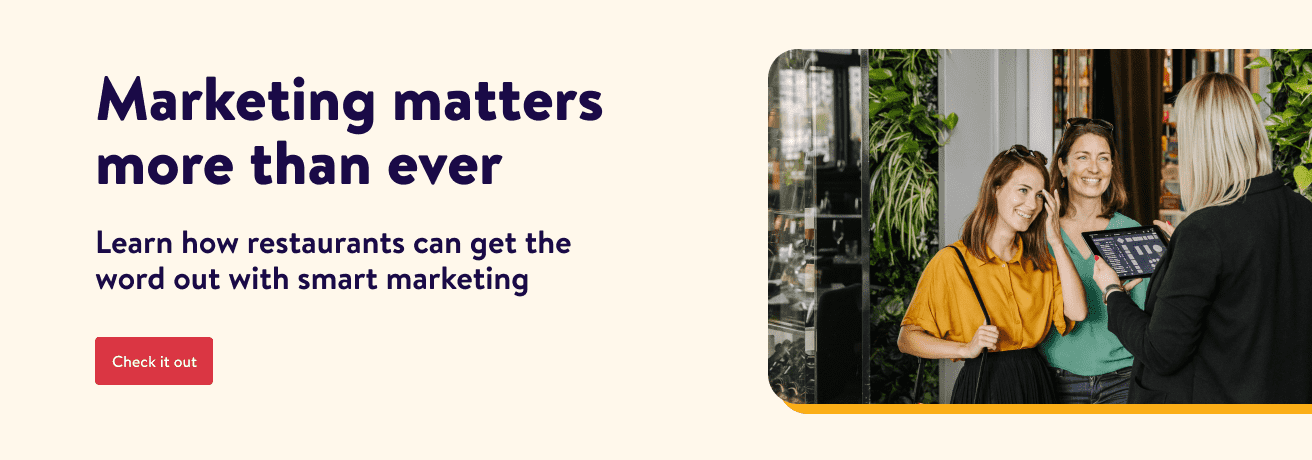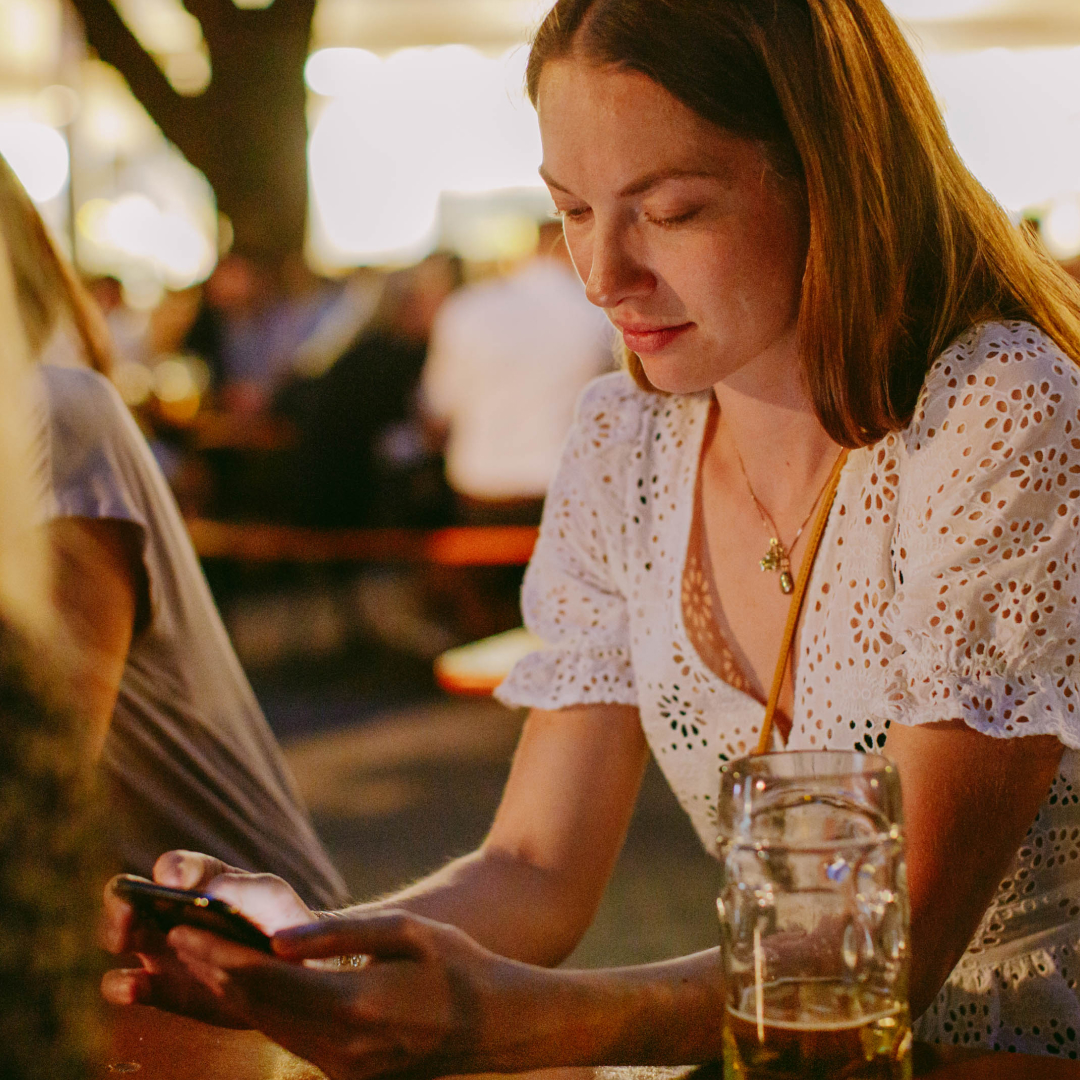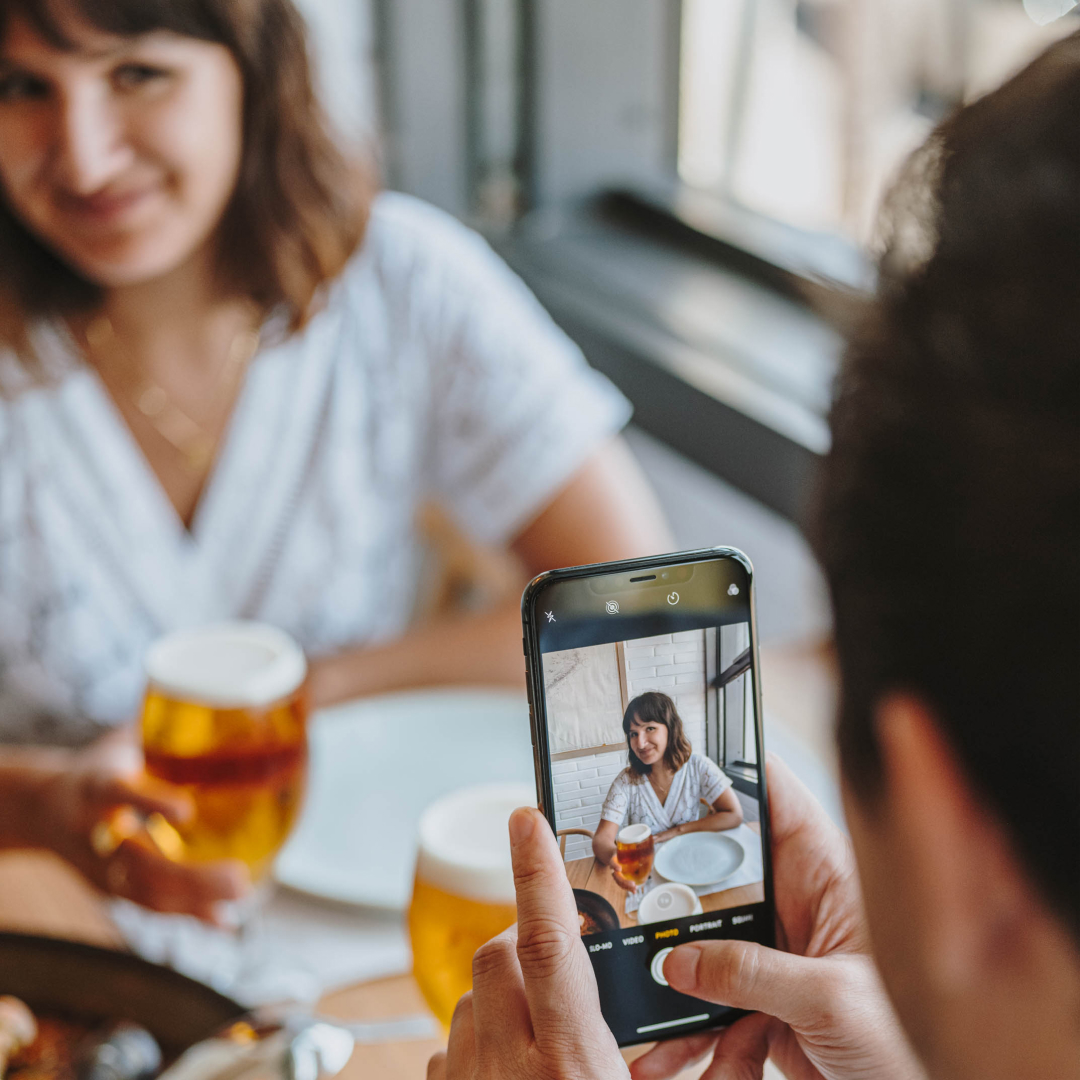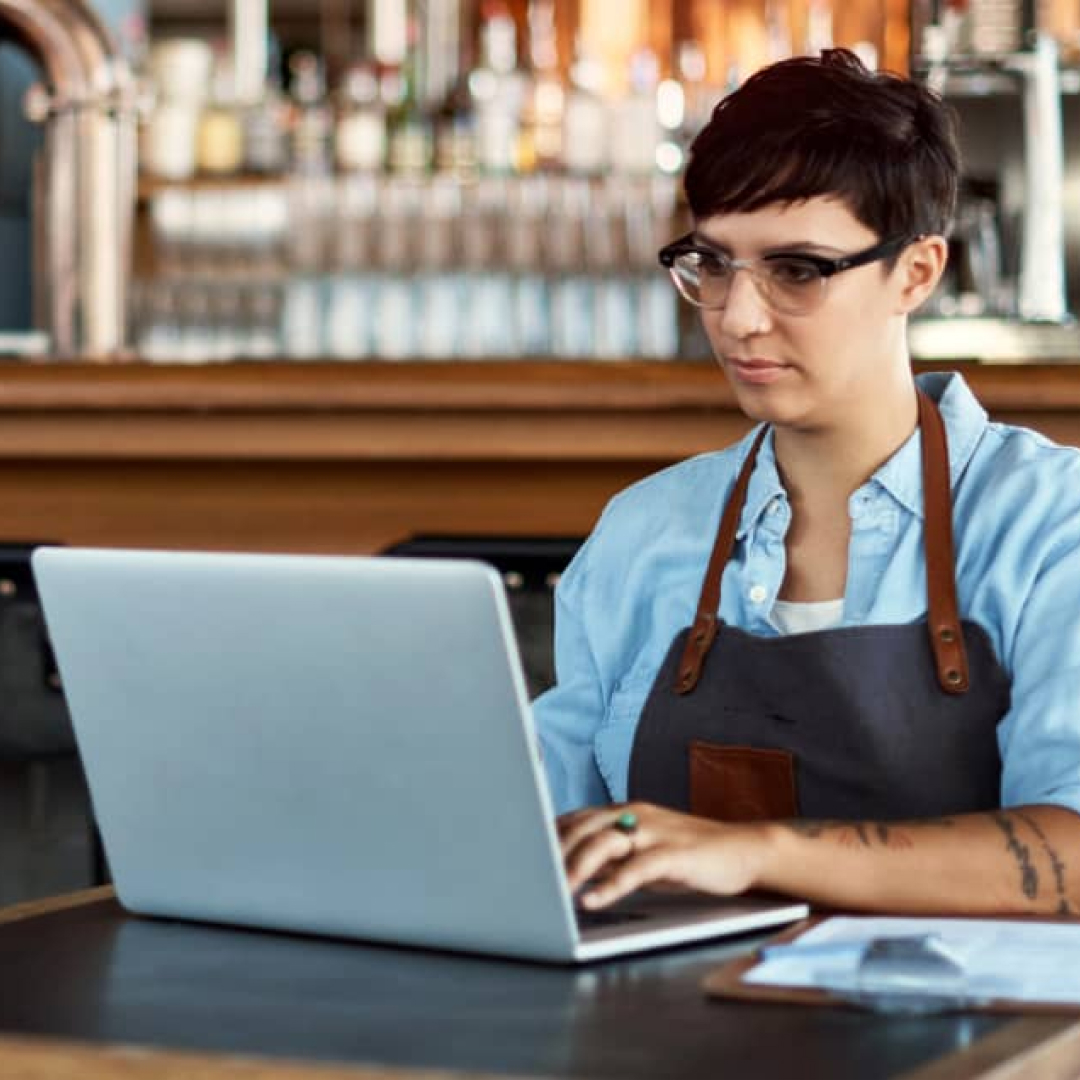Advertising campaigns have changed drastically over the last decade. Word-of-mouth, flyers, and standard print posters are still a great way to create brand awareness, but adding in additional advertising tactics can lead to larger growth.
Ninety percent of guests research a restaurant online before actually going there, according to a survey conducted by Upserve. To get butts in seats, it’s crucial to ensure that guests are discovering your restaurant when they’re searching.
Whether the restaurant is getting off the ground or in need of some new ideas, here’s a breakdown of some of the best advertising tactics for restaurants:
Paid advertising
Paid advertising is media that you pay for, unlike its owned (e.g. hanging flyers in a restaurant window) and earned (e.g. likes and comments on a social media post) counterparts. While there’s a cost associated with paid advertising, for many businesses, it brings about one of the highest returns on investment (ROI), according to Forbes.com.
Most paid advertising operates on a pay-per-click model: an advertiser pays only when someone actually clicks on the ad. At the beginning of a paid campaign, set up a maximum budget. The ad will continue to run until the budget has run out.
Many platforms allow advertisers to target an audience—for instance, restaurant guests—by defining criteria around search terms, demographics, location, interests, and other pages visited. When considering which paid advertising platform is right for your restaurant, it’s crucial to define the restaurants’ target guest to get the most bang for your buck.
1. Google Ads
SEO (search engine optimization) is a necessity when it comes to marketing and advertising a restaurant, but it’s just one element. There are 4.3 billion Google users worldwide and a strong Search Engine Marketing (SEM) plan can help target the best guests for your restaurant. A Google Ads campaign is an easy, practical way to build awareness for a restaurant. The simple text ads don’t require creative assets and, once the campaign is set up, can be automated to run with minimal work.
Through the Google Ads and Keyword Planner platforms, you can set up SEM campaigns and bid on relevant keywords—think: “new Thai restaurants in Miami.” Winning a bid on a keyword is how an ad appears in the top two Google results for a specific search term. Decide how much the restaurant is willing to spend on the paid advertising budget and calculate the maximum CPC (cost per click) before bidding.
It’s best to keep keywords specific and concise. Bidding on broad search terms, such as “best new restaurants” can be expensive and ineffective. Try to stick to specific local terms and remember the target guest.
2. YouTube Ads
YouTube Ads require more creative effort but can be a great opportunity to show off more of the restaurant brand. Look to hire a freelance videographer and shoot a campaign ad that will run in the pre-roll slot before other creator’s videos. Like SEM campaigns, these ads will operate on a pay-per-view basis; you only incur a cost when someone actually views the content. Use this footage to also build out social media assets or run dynamic campaigns on other platforms.
3. Facebook Ads
For something highly customizable, try Facebook Ads. The platform boasts a location targeting service, giving restaurants the ability to reach diners in their immediate area.
Their campaign manager also provides the ability to specify campaign objectives, so tailor the ads to meet the restaurant needs. Facebook makes it possible to create a campaign that reaches a highly specific audience so restaurants can attract new diners, sell out an event, or spread the word about a new menu.
Facebook Ads, like Google Ads, operates on a CPC, or click through rate (CTR) model. There is the option to pay for impressions—how many people saw the ad versus interacted with it—but that route tends to be more expensive in the long run. Instead of boasting a simple text advertisement, this platform allows for more dynamic options, such as a collection of photos (or promote the video created for YouTube ads).
4. Instagram Ads
Once the restaurants’ social media pages are up and running, consider promoting its Instagram posts on the platform. Getting eyes on the restaurant brand pages can be one of the most powerful ways to drive diners to your door.
Putting money behind existing content can help posts reach a wider audience and push guests to make that reservation. Prompt diners to swipe up and reserve a table on the spot with Instagram Story Ads.
Since Instagram shares a parent company (Meta) with Facebook, paid ads on the platform offer the same targeting to make campaigns hyper localized.
5. Twitter Ads
There are three types of ads on Twitter: Promoted Ads, Follower Ads, and Trend Takeovers. Promoted Ads are similar to boosting an Instagram post. Follower Ads recommend that a user follow a restaurant account based on their similar interests. And Trend Takeovers place your ad alongside what is trending.
Based on a campaign’s objectives, the platform will recommend which product is best suited for its needs. Whether a restaurant is looking to boost an ads reach, gain video views, or drive traffic to a website, having an active Twitter account (while recommended for brand awareness), isn’t a requirement.
6. Promoted results on reservation apps
A great next step toward improving restaurant awareness is to get listed on a restaurant app or reservation tool. Platforms like OpenTable can help the restaurant reach a larger audience through display advertising, social media marketing, and more.
Diners often search for new restaurants through these platforms, so advertising there can be a game changer when it comes to bookings. Once you’ve picked a platform, paying to appear in promoted search results at the top of every page can ensure that diners keep your restaurant top of mind for every reservation.
Organic advertising and partnerships
Anything that falls under the organic advertising umbrella is typically unpaid. Yes, there are costs associated with creating the content, but unlike paid advertising, guest interactions (clicks, impressions, shares) incur no further payouts from the restaurant.
While this might seem ideal, it’s much harder to gain traction and appear in front of diners without additional paid promotion. When using organic promotion—which is a must in building a strong brand identity—consider using it in tandem with other paid tactics or partnerships.
7. Sponsor local clubs and teams
If online advertising methods start to feel a bit tedious, don’t be afraid to think outside of the box. Local teams or clubs are always in need of new equipment, costumes, uniforms and more. Pitching in to help is a great way to raise local awareness by getting your logo or name on the back of a jersey or in a yearbook.
Websites like Sponsoo work to pair business with teams in need of sponsorship, or head down to the local Chamber of Commerce to find out what schools or local events are in need of a partner. While at the office, ask about any regional ad space they have available in welcome packets or business directories. It’s a great, traditional way to reach guests not on digital platforms.
8. Organic social media
Organic social media covers all free posts on a restaurants’ profile or page. Guests may come across it on their own or discover it through other paid advertising tactics used to promote the page.
When it comes to content, remember that, for many guests, the phone eats first. It might sound sacrilegious, but think about how guests will photograph individual menu items. Having diners photograph and share your food on their social feeds is fantastic, free promotion. When designing the plating, think about which menu items can stand out on the social grid.
If the restaurant is looking for more social engagement or user generated content, try arranging a social media contest. Offer a free meal or gift certificate for a random commenter, or feel free to make it as elaborate as a local scavenger hunt.
9. Influencer partnerships
While social media is a large component of running a restaurant, that’s only one factor of the job. Partnering with a restaurant or food influencer can be a great way to introduce the restaurant to a new audience. Influencers work professionally on social media marketing to build a community that trusts what they have to say.
Consider hosting a private tasting; invite influencers and friends to come in for a meal. It’s a great way to get content and further exposure. And by nurturing relationships with those that you invite, it can turn these partnerships into even more guests down the road.
The key to choosing the best advertising tactic for a restaurant is to lean into the restaurant brand and have fun with it. If you’re still unsure which method to go with, ask some trusted friends and family what they want to see or what they would engage with. There’s no one-size-fits-all approach, so don’t be afraid to experiment with different options until you’re able to figure out what’s best for your specific restaurant.





